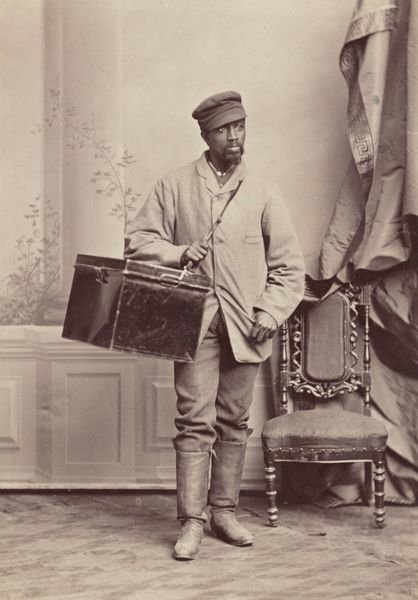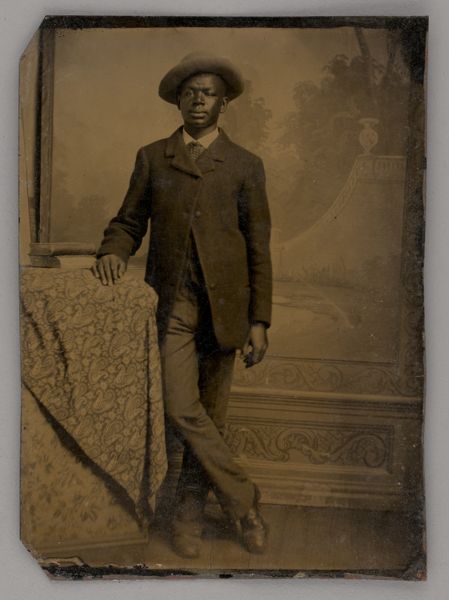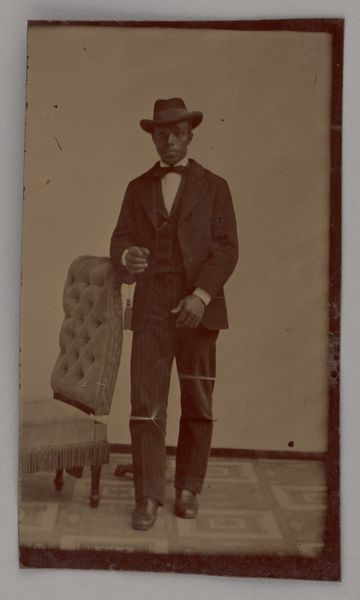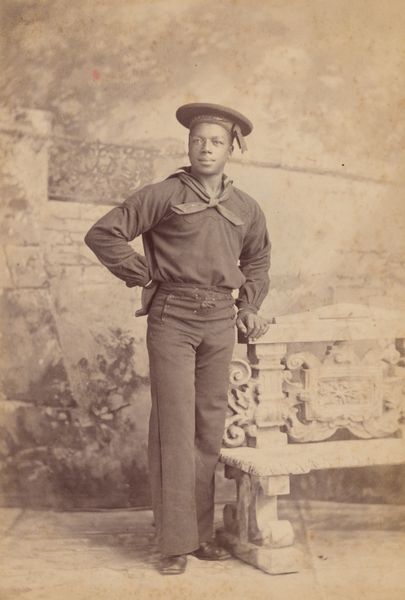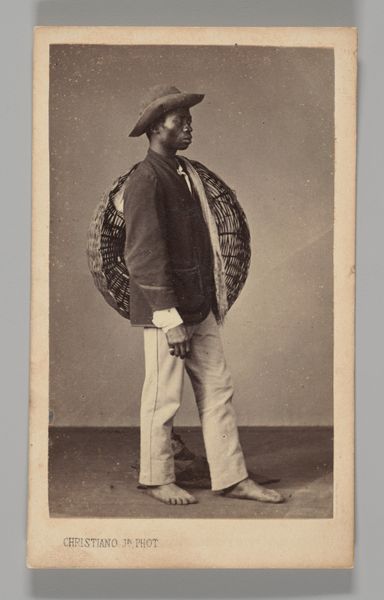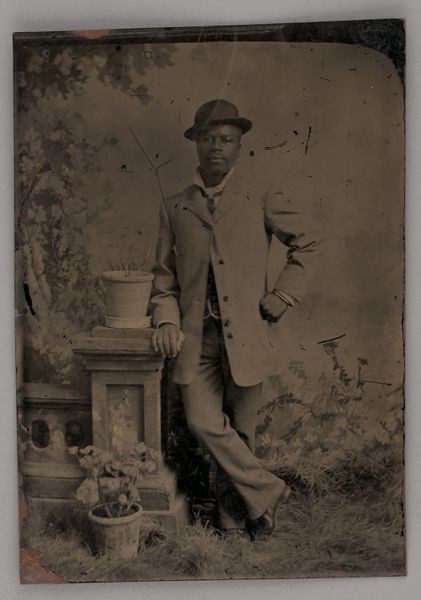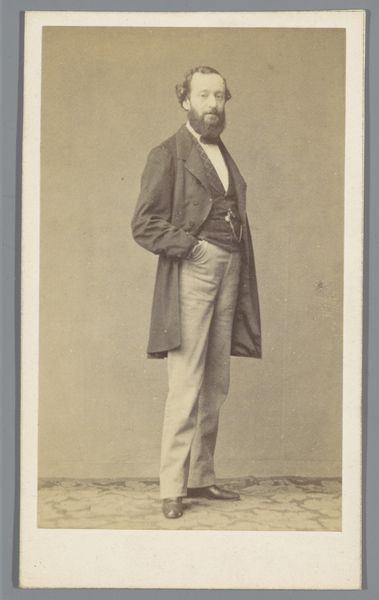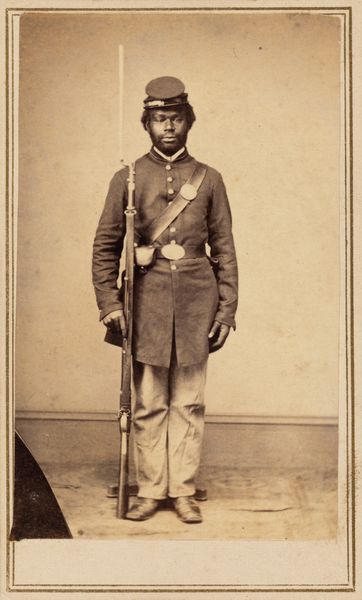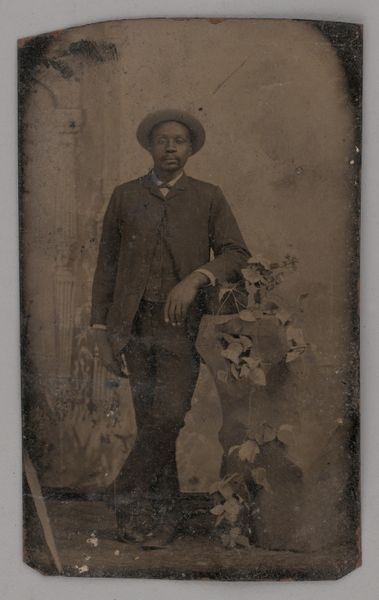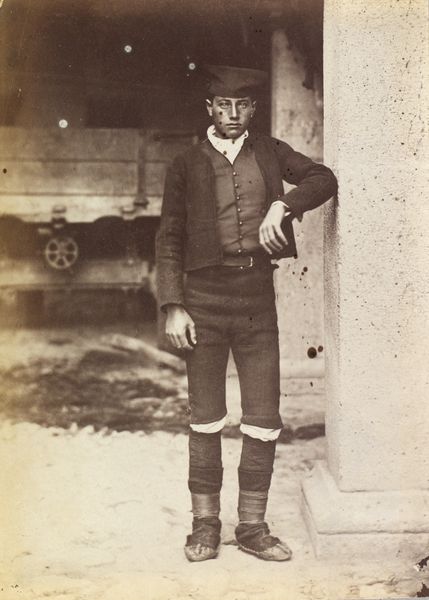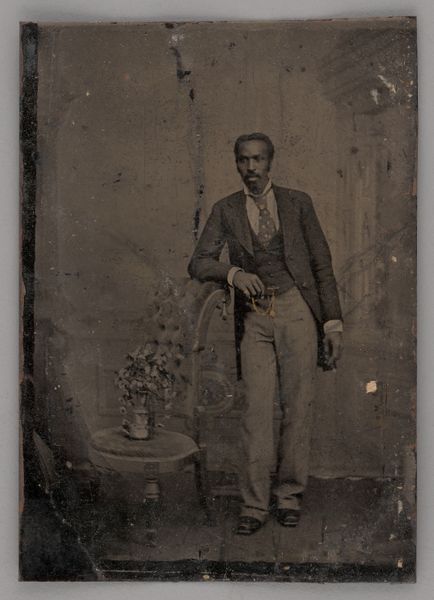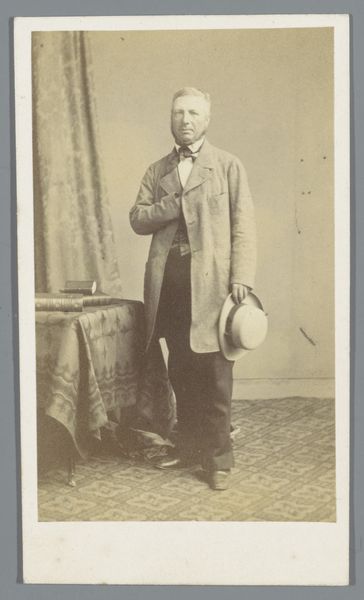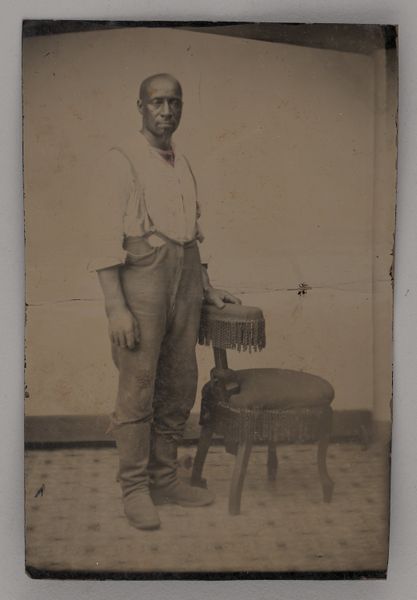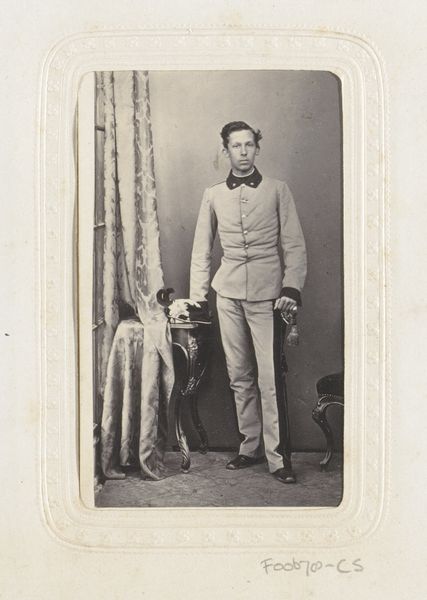![Theodore Ferris [recto] by George K. Warren](/_next/image?url=https%3A%2F%2Fd2w8kbdekdi1gv.cloudfront.net%2FeyJidWNrZXQiOiAiYXJ0ZXJhLWltYWdlcy1idWNrZXQiLCAia2V5IjogImFydHdvcmtzLzA5YzEzZDQ5LWMzNzctNDFiNy1hZGI2LTZjNjAzMDJlNzIwOC8wOWMxM2Q0OS1jMzc3LTQxYjctYWRiNi02YzYwMzAyZTcyMDhfZnVsbC5qcGciLCAiZWRpdHMiOiB7InJlc2l6ZSI6IHsid2lkdGgiOiAxOTIwLCAiaGVpZ2h0IjogMTkyMCwgImZpdCI6ICJpbnNpZGUifX19&w=3840&q=75)
photography, gelatin-silver-print
#
portrait
#
outdoor photograph
#
black and white format
#
figuration
#
photography
#
historical photography
#
black and white
#
gelatin-silver-print
Dimensions: image: 13.7 × 10 cm (5 3/8 × 3 15/16 in.) mount: 32.4 × 25.6 cm (12 3/4 × 10 1/16 in.)
Copyright: National Gallery of Art: CC0 1.0
Editor: Here we have "Theodore Ferris [recto]," a gelatin silver print photograph taken around 1869, likely by George K. Warren. There's a somber, posed quality to it, almost staged. What strikes you most about this image? Curator: This image speaks volumes about the intersections of race, labor, and representation in post-Civil War America. Looking at Theodore Ferris, carrying goods marked "Yale Confectionery," invites questions about the economic and social landscape of the time. How did institutions like Yale utilize Black labor, and what did economic opportunities look like for Black men then? Editor: So, you see this less as a simple portrait and more as a document of social conditions? Curator: Exactly. Photography in this era was often used to perpetuate stereotypes. We must ask, what agency did Ferris have in this portrayal? Is this an attempt to depict respectability, or is it a visual inscription of the racialized labor force? Consider the gaze, his posture, the context of the "Yale Confectionery" box. They all construct a narrative. Editor: The fact that it’s a gelatin silver print makes me wonder, how did that process affect how people were portrayed? Curator: The availability and affordability of gelatin silver prints broadened photographic representation, but didn't necessarily democratize it. While more people were being photographed, the power dynamics behind the lens often remained unchanged. Editor: That’s a perspective I hadn’t fully considered. It's more complex than just a historical image; it’s about power, representation, and the nuances of labor. Curator: Precisely! Analyzing images like these allows us to dissect the complex tapestry of identity and work towards a more equitable understanding of history.
Comments
No comments
Be the first to comment and join the conversation on the ultimate creative platform.
